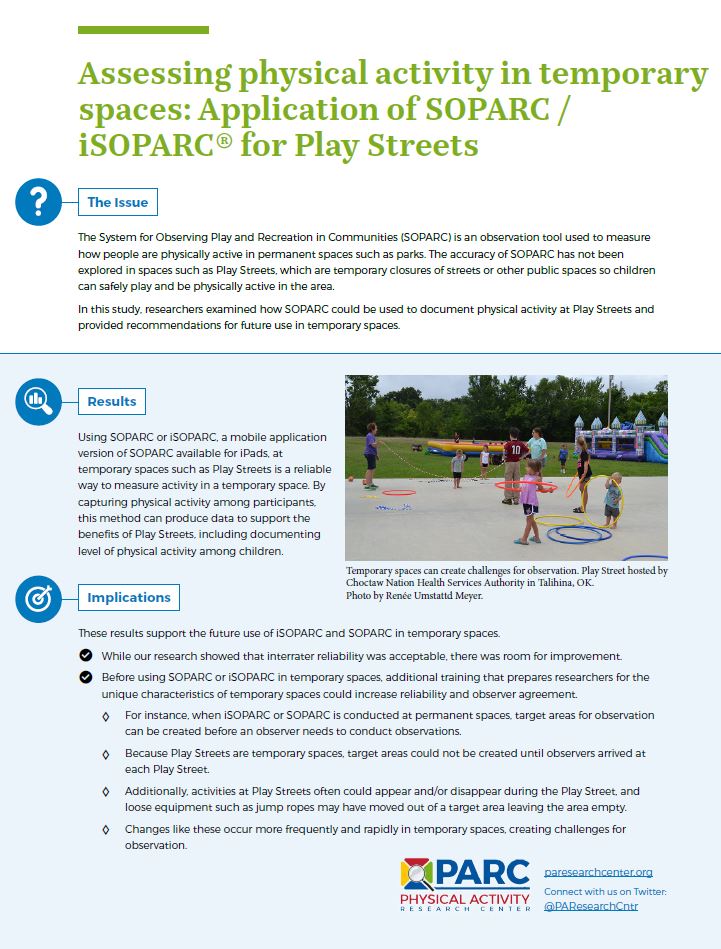Recommended actions to increase physical activity of diverse and disadvantaged adolescents in the summer
By: James F. Sallis and Terry L. Conway from University of California San Diego
Our research with 207 low-income adolescents from five racial/ethnic groups found that all adolescents, regardless of race, ethnicity, or sex, were substantially less physically active and reported more screen time in the summer than the school year. Based on those findings, the recommendations below can be undertaken by multiple stakeholders to increase physical activity in the summer and ultimately improve health. Results from the study provide direction for promoting adolescent summer time physical activity generally and for tailoring actions for specific subgroups.
Actions to Increase Physical Activity in the Summer
- Target programs and resources to increase summer physical activity for American Indians, Latinos, and girls. These groups had the lowest physical activity during the summer and should be the highest priorities for programs and resources.
- Adopt specific actions to reduce screen use in the summer. Screen time was higher in the summer than in the school year for almost every group of adolescents.
- Create easily-accessible supervised summer programs so adolescents can be active with their peers. Adolescents enjoy being active with other youth. A surprising finding of the study was that enjoyment of physical activity was lower in the summer among all groups of youth.
- Promote walking programs, provide targeted incentives or adopt activities that encourage walking. Walking was the most preferred physical activity across all subgroups and seasons.
- Start running programs or exercise classes that are aimed at adolescents. Exercise and running were highly rated by all race/ethnic groups.
- Promote water-based activities to provide a respite to the summer heat. Girls showed strong preferences for water play.
- Provide safe and supervised activities throughout neighborhoods, rather than invest in expensive facilities. In and around the home were the most preferred places to be active, regardless of season, except for Latinos and non-Hispanics Whites. This preference might reflect a desire to be active with friends and relatives, the difficulty of arranging transportation to other places, or parental instructions to stay close to home.
Research findings from this lay summary are available in a research brief and the full article published in Preventive Medicine.
Suggested Citation for Lay Summary:
Sallis JF & Conway TL. Recommended Actions to Increase Physical Activity of Diverse and Disadvantaged Adolescents in the Summer. A Lay Summary. San Diego, CA: Physical Activity Research Center and University of California San Diego; 2019. Available at: https://paresearchcenter.org/recommended-actions-to-increase-physical-activity-of-diverse-and-disadvantaged-adolescents-in-the-summer/.
This lay summary was made possible with funding from the Physical Activity Research Center. The research that generated the lay summary was led by Drs. James F. Sallis and Terry L. Conway from the University of California San Diego.














